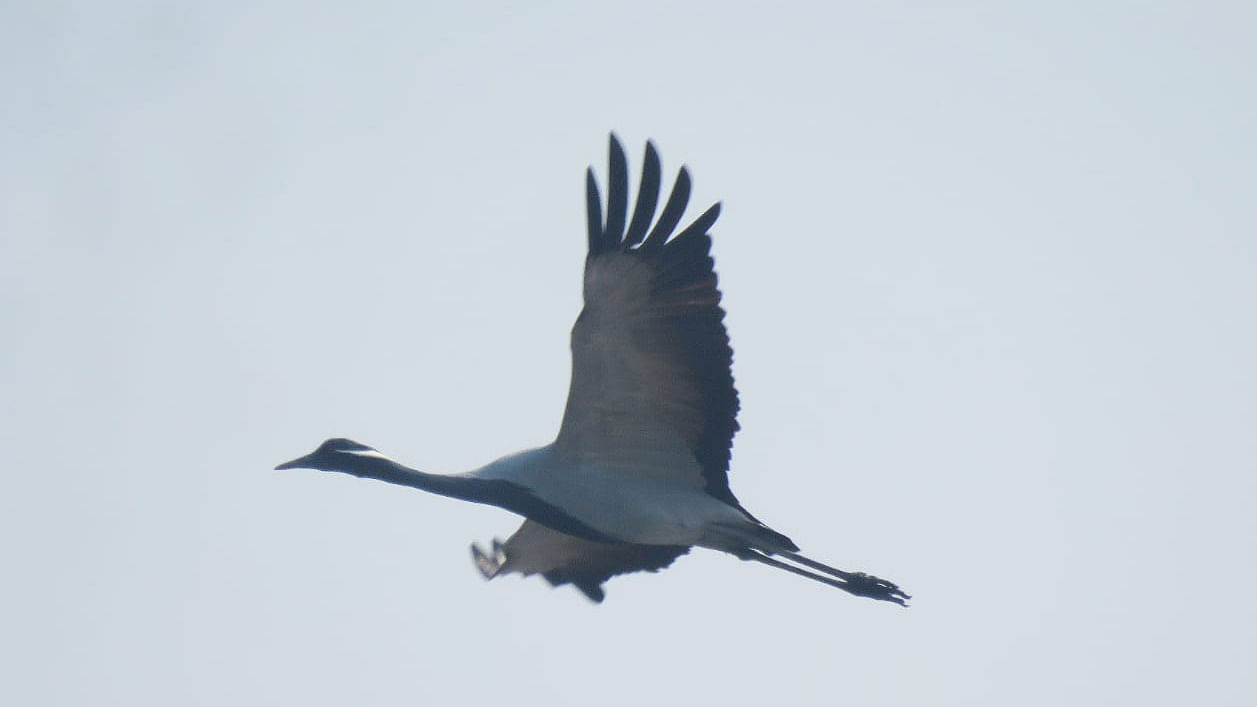
A rare bird, the Demoiselle Crane, was sighted in Raigad district's Uran on Thursday.
Bird watchers and nature lovers were excited to see the rare visitor. "This is a rare view for us," said bird watcher Parag Gharat, who quickly took a picture of the flying guest.
A team of the Bombay Natural History Society (BNHS) had observed two Demoiselle Cranes near Belpada in 2013.
“This reconfirms the need to maintain wetlands in Uran to make sure that birds do not fly helter-skelter and reach their destinations to which they habituated," said B N Kumar, director of NatConnect Foundation.
“That the crane was spotted near Mumbai is a big development,” he said, adding that he would be communicating in detail with the BNHS.
The Demoiselle Crane (Grus Virgo) is a species of crane found in central Eurosiberia, ranging from the Black Sea to Mongolia and North Eastern China. There is also a small breeding population in Turkey. These cranes are migratory birds. Birds from western Eurasia will spend the winter in Africa while the birds from Asia, Mongolia and China will spend the winter in the Indian subcontinent.
There are six main populations of Demoiselle Cranes occurring in over 47 countries throughout the world. The three eastern populations occurring in Eastern Asia, Kazakhstan/Central Asia and Kalmykia (between the Black and Caspian Seas) are abundant, numbering in the tens of thousands. There are also three remnant populations occurring near the Black Sea and Turkey.
“The two wintering ranges including India and surrounding countries and northwestern Africa centered in Sudan,” according to the International Crane Foundation.
The bird is symbolically significant in India's culture – and is known as Koonj.
The adults have pale bluish-grey body plumage, long white feather plume stretches from the eye to beyond the head, long black feathers hang from the breast, reddish-orange eyes, black legs, short bill; juveniles – pale ashy gray, with nearly white heads, gray tufts on the ear coverts.